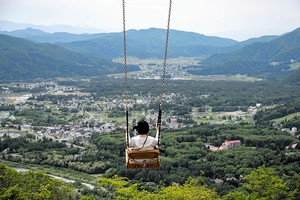By SHINJIRO SADAMATSU/ Staff Writer
June 16, 2024 at 19:03 JST
FUKUOKA--A traditional dollmaker here is working on a giant decorative float for a summer festival to help cheer up survivors of the New Year’s Day earthquake that struck the Noto Peninsula.
Hiromine Nakamura chose Hasegawa Tohaku (1539-1610), a noted painter from Nanao, Ishikawa Prefecture, as the theme of an impressive Kazari-Yama float to be displayed during the Hakata Gion Yamakasa festival, which runs from July 1 to 15.
“I was very shocked (by the earthquake),” said Nakamura, 38, who knows many people, potters and others in traditional crafts, in the Noto Peninsula. “I hope I can be of some help with my Yamakasa dolls.”
The Noto Peninsula is largely located in Ishikawa Prefecture. The death toll from the magnitude-7.6 earthquake totaled 260, including quake-related fatalities.
Nakamura is a fourth-generation member of a family of artists specializing in Hakata dolls, unglazed porcelain figurines that are one of Fukuoka’s traditional handicrafts.
From this year, he joined a team responsible for creating the Kazari-Yama float for the Nakasu-Nagare district, one of the seven taking part in the festival.
Tohaku, who lived during the Azuchi-Momoyama Period in the late 16th century, is known for his “Shorin-zu Byobu” (Pine Trees), an ink painting on a folding screen that is designated as a national treasure.
Kazari-Yama floats, which typically rise more than 10 meters in height, are decorated with dolls created by artists specializing in Hakata figurines.
Nakamura will put dolls of Tohaku and his rival Kano Eitoku (1543-1590) on the Kazari-Yama float to show as if they are facing off against each other.
Unlike the Kaki-Yama floats to be hauled through city streets, the massive Kazari-Yama floats will be on display at designated locations for the duration of the festival.




















A peek through the music industry’s curtain at the producers who harnessed social media to help their idols go global.
A series based on diplomatic documents declassified by Japan’s Foreign Ministry
Here is a collection of first-hand accounts by “hibakusha” atomic bomb survivors.
Cooking experts, chefs and others involved in the field of food introduce their special recipes intertwined with their paths in life.
A series about Japanese-Americans and their memories of World War II